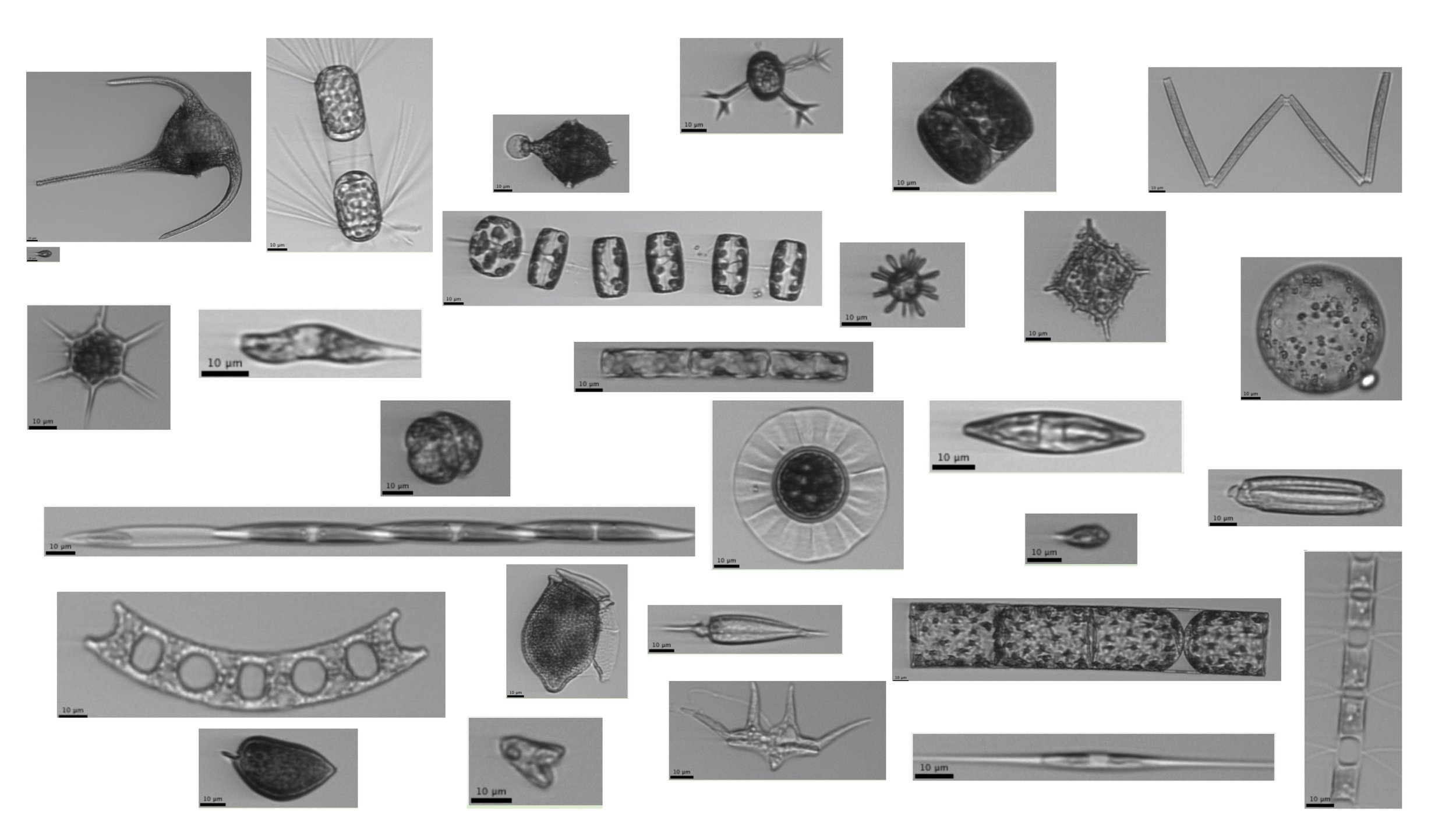I study the microscopic life in the ocean on large spatial scales by combining knowledge from both ship-board measurements and satellite data. I am an optical oceanographer, which means that I use the color and brightness of the water to assess and understand the particles - notably phytoplankton - that are found there.
My current research is focused on development of methods to estimate distributions and abundances of phytoplankton taxonomic groups from space, which in turn helps us to improve our understanding of the interactions between phytoplankton and their physical environment. As a member of the NASA PACE Science and Applications Team, I am working on algorithm development for detecting phytoplankton community composition, namely diatoms, from ocean color satellite measurements. I collaborate with data scientists at the UW eScience Institute to apply open-source data science and machine learning tools to my research.
The above images are plankton observed by an Imaging FlowCytobot, or IFCB for short, which is an imaging-in-flow cytometer that can take pictures of thousands of individual phytoplankton cells and particles in a matter of minutes. These images have been collected in the open ocean with an IFCB instrument connected to a flow-through seawater system, allowing for high spatial and temporal resolution sampling of ocean surface waters. The millions of images recorded with an IFCB in the open ocean are analyzed using machine learning and deep learning networks, and these “big data” give us an unprecedented view of the primary producers in the ocean.


